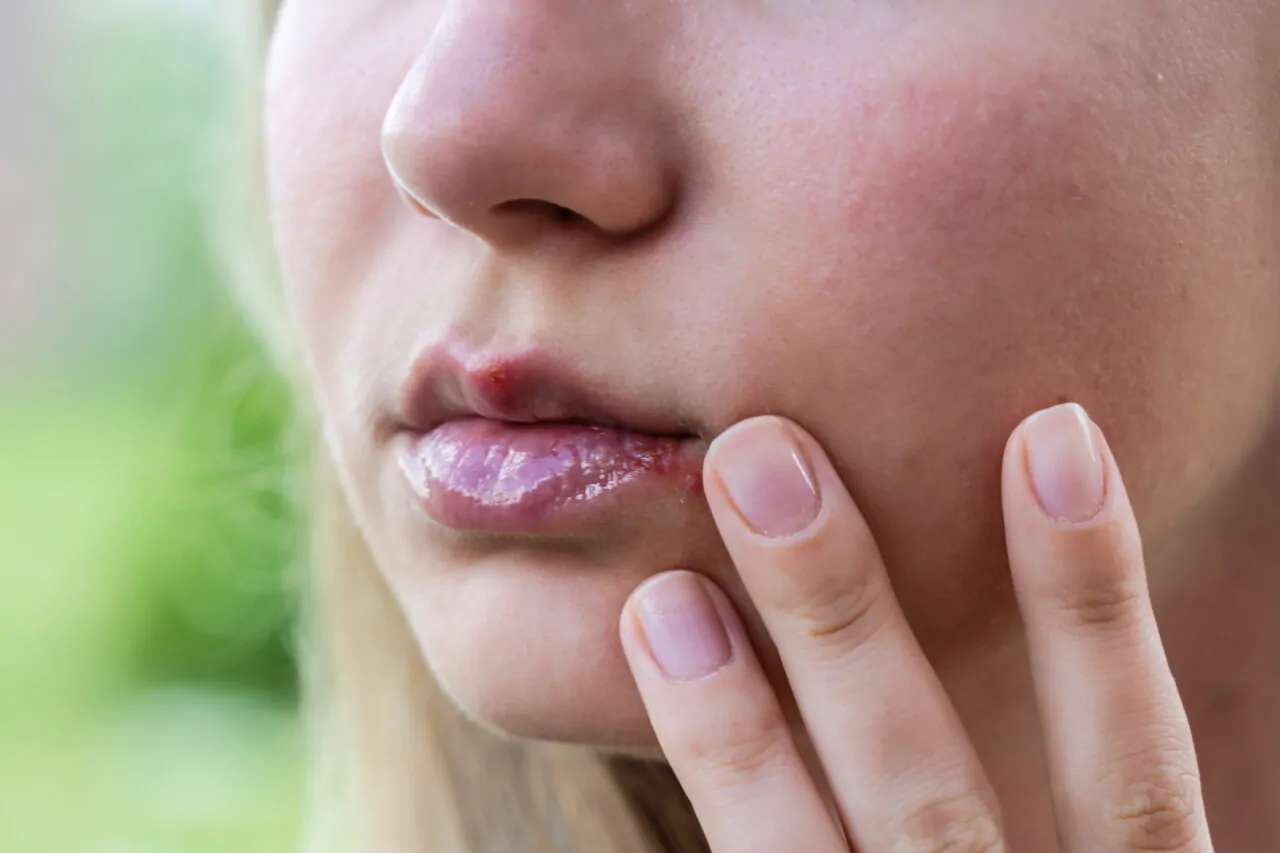Herpes zoster, commonly known as shingles, is a viral infection caused by the varicella-zoster virus (VZV). This is the same virus that causes chickenpox. After a person recovers from chickenpox, the virus remains dormant in the nerve tissue near the spinal cord and can reactivate later in life, leading to the development of shingles.
Shingles typically appears as a painful rash that develops on one side of the body, forming a band or strip. The rash is comprised of fluid-filled blisters that eventually crust over and heal within a few weeks. Along with the rash, individuals may experience symptoms like itching, burning sensations, numbness, tingling, and fever.
While shingles itself is not usually life-threatening, it can be quite uncomfortable and can lead to complications, particularly in older adults or individuals with weakened immune systems. One of the most common complications is postherpetic neuralgia, where the pain persists even after the rash has healed.
The varicella-zoster virus is contagious, but it does not spread through casual contact. Direct contact with the fluid from the shingles blisters, however, can transmit the virus to those who have never had chickenpox or received the varicella-zoster vaccine. This can result in the development of chickenpox, not shingles, in the exposed individuals.
Causes
Herpes zoster, commonly known as shingles, is caused by the reactivation of the varicella-zoster virus (VZV), the same virus that causes chickenpox. After a person recovers from chickenpox, the virus remains dormant in the nerve tissues near the spinal cord and brain. However, under certain conditions, the virus can reactivate, leading to herpes zoster.
The exact triggers that cause the reactivation of the varicella-zoster virus are not fully understood. However, several factors can increase the risk of developing shingles:
- Age: The risk of herpes zoster increases with age. Older adults and individuals with weakened immune systems are more susceptible to the reactivation of the virus.
- Weakened Immune System: Anything that weakens or compromises the immune system can increase the likelihood of herpes zoster. This includes conditions such as HIV/AIDS, certain cancers, or the use of immunosuppressive medications.
- Stress: High levels of stress or emotional upheaval can weaken the immune system, making the body more susceptible to viral reactivation.
- Certain Medications: Some medications, such as corticosteroids or drugs used in chemotherapy, can suppress the immune system, increasing the risk of shingles.
- History of Chickenpox: Individuals who have previously had chickenpox have the varicella-zoster virus dormant in their nerve tissues, increasing the risk of developing shingles later in life.
Symptoms
The symptoms of herpes zoster can vary but typically include:
Pain and Tingling
Before the characteristic rash appears, individuals may experience pain, tingling, or a burning sensation in a specific area of the skin. This discomfort usually occurs on one side of the body or face and can precede the appearance of the rash by a few days.
Rash
A distinctive rash typically develops after the initial symptoms. The rash consists of red, swollen blisters that are filled with fluid. These blisters appear in a band-like pattern, following the path of the affected nerve. The rash can be quite painful and may cause itching.
Sensitivity to Touch
The affected skin may become highly sensitive, causing pain or discomfort when touched.
Headache and Fever
Some individuals with herpes zoster may experience mild to moderate headaches and a low-grade fever at the onset of the infection.
Fatigue
Fatigue or a general feeling of low energy is common during the course of the infection.
Flu-like Symptoms
In some cases, individuals may experience flu-like symptoms, including muscle aches, chills, and swollen lymph nodes.
It is important to note that the symptoms of herpes zoster can vary in severity and duration. It is advisable to seek medical attention as soon as possible if you suspect you may have shingles. Early intervention may help minimize complications and facilitate prompt treatment.
Treatments
The treatment for Herpes Zoster, commonly known as shingles, aims to alleviate symptoms, shorten the duration of the outbreak, and prevent complications. Here are the main treatment options:
Antiviral medications
The primary treatment for Herpes Zoster is antiviral medication, such as acyclovir, valacyclovir, or famciclovir. These medications help to reduce the severity of symptoms, speed up the healing process, and prevent complications. They are most effective when started within 72 hours of the rash appearing.
Pain management
Pain relief is a crucial aspect of treating Herpes Zoster, as the condition can cause intense pain. Over-the-counter pain relievers like acetaminophen (paracetamol) or nonsteroidal anti-inflammatory drugs (NSAIDs) can be used. In severe cases, prescription pain medications may be necessary.
Topical medications
Applying creams or ointments containing capsaicin or lidocaine to the affected areas can help numb the skin and provide temporary relief from pain and itching.
Cool compresses
Applying cool, moist compresses to the rash can help soothe the skin, reduce inflammation, and relieve discomfort.
Antidepressants or anticonvulsants
In cases where severe pain persists even after traditional pain medications, healthcare professionals may prescribe antidepressants (such as tricyclic antidepressants) or anticonvulsant medications (such as gabapentin or pregabalin) to help manage nerve-related pain.
Preventing complications
It is important to protect the affected areas from further bacterial infection by keeping them clean and avoiding scratching. If a bacterial infection does occur, may be prescribed.
Conclusion
Herpes Zoster, commonly known as shingles, is a viral infection caused by the reactivation of the varicella-zoster virus (VZV), the same virus responsible for chickenpox. It primarily affects individuals who have previously had chickenpox.
The key characteristics of Herpes Zoster include a painful rash, typically appearing as a band or patch on one side of the body. This rash is accompanied by symptoms like tingling or burning sensations, itching, and fluid-filled blisters. While shingles most commonly occurs in adults, it can also affect children and individuals with weakened immune systems.
Early diagnosis plays a crucial role in managing Herpes Zoster effectively. Antiviral medications, such as acyclovir, valacyclovir, or famciclovir, are commonly prescribed to shorten the duration of the rash, alleviate pain, and reduce the risk of complications. Prompt treatment is particularly important for older individuals and those with weakened immune systems.
In addition to antiviral medications, symptom management techniques, including pain relievers, topical creams, and antihistamines, may be recommended to alleviate discomfort and itching associated with the rash.
FAQs
What is Herpes Zoster?
Herpes Zoster, commonly known as shingles, is a viral infection that causes a painful rash. It is caused by the reactivation of the varicella-zoster virus, which also causes chickenpox.
What are the symptoms of Herpes Zoster?
Symptoms of Herpes Zoster include a painful rash that typically appears in a band or stripe on one side of the body, along with burning or tingling sensations. It can be accompanied by fever, headache, and general malaise.
How is Herpes Zoster transmitted?
Herpes Zoster is not transmitted through direct contact with shingles rash. However, it can be transmitted through direct contact with the fluid from the rash blisters. People who have not had chickenpox or the chickenpox vaccine can develop chickenpox if they come into contact with the rash.
Who is at risk of developing Herpes Zoster?
Anyone who has previously had chickenpox is at risk of developing Herpes Zoster. The risk increases with age and individuals with weakened immune systems.
How is Herpes Zoster treated?
Antiviral medications, such as acyclovir, valacyclovir, and famciclovir, may be prescribed to shorten the duration and severity of the infection. Pain relievers and topical creams can help alleviate discomfort.
Can Herpes Zoster be prevented?
The risk of developing Herpes Zoster can be reduced by getting vaccinated with the shingles vaccine. It is recommended for individuals aged 50 years and older.





